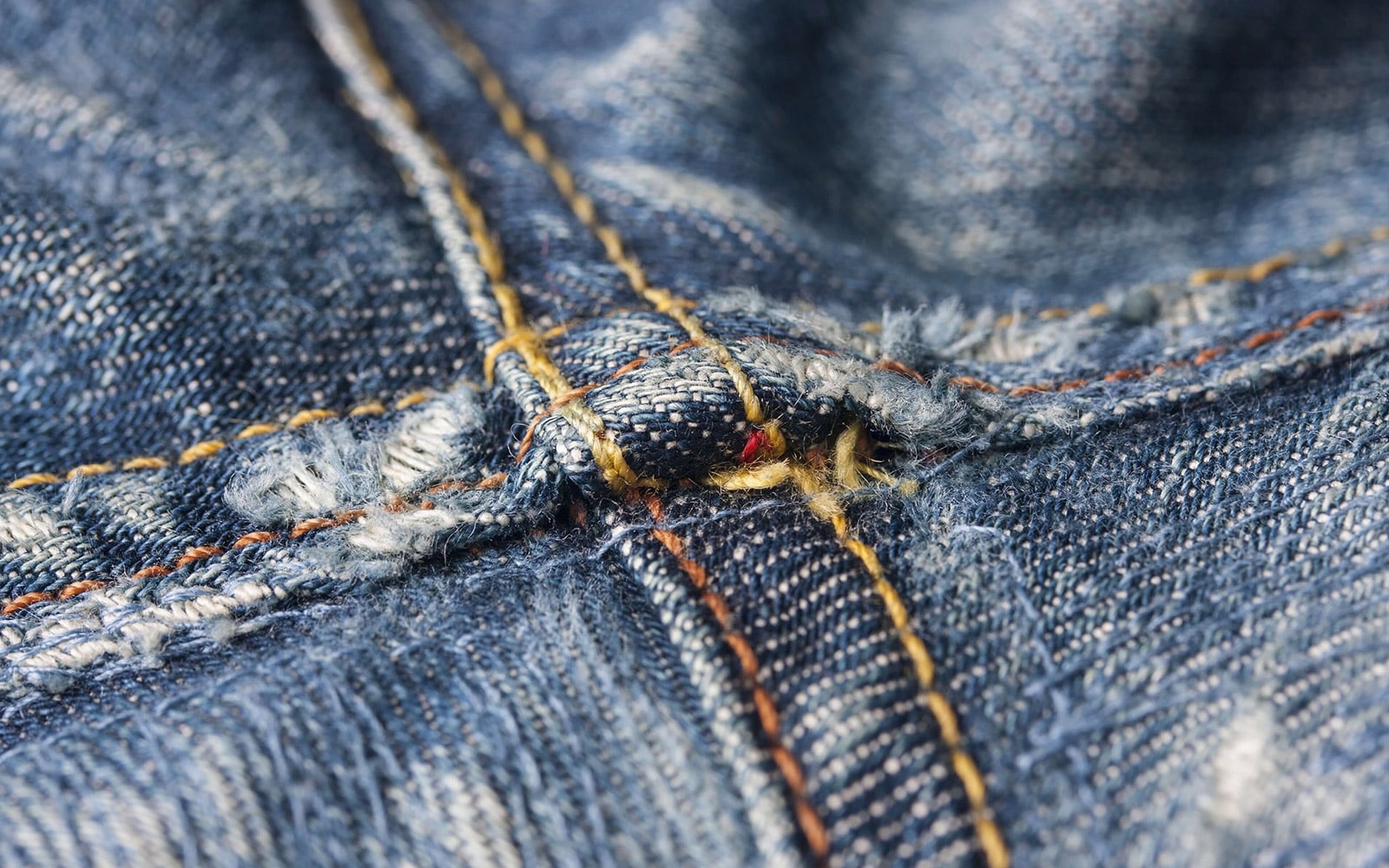Jeans: A History Of Denim Throughout The Years
As Holé Button Covers are designed to go on jeans, it got us thinking… The history of denim and jeans is long and colourful, so we thought it’d be nice, especially with London Fashion Week and Genes For Jeans Day coming up this September, to write a blog about Jeans: A History Of Denim Throughout The Years.
What Is Denim?
As per the Levi’s denim dictionary; denim is a durable cotton or cotton-blend twill textile, typically used to make jeans, overalls and other clothing.

How Denim Is Made
To make denim, the horizontal weft threads are passed under two or more vertical warp threads. This process makes diagonal ribbing of denim that distinguishes it from other fabrics. The warp threads are dyed blue, and the weft threads remain white; this gives you that characteristic colour of denim that don’t find with any other fabric.
That Iconic Indigo Blue Colour...
Original denim was dyed using the ‘Indigofera Tinctoria’ plant from India, but most modern denim is now dyed synthetically. Depending on the style and the look, the denim may be dyed a few times to build up the layers of that iconic indigo blue colour. Denim will fade over time, and get that desirable ‘worn out’ look.

The Birthplace Of Denim
Although most people associate jeans with North America, the material they’re made from actually originates from the South of France, in the city of Nimes. The name ‘denim’ comes from the French phrase "serge de Nimes", which translates into ‘a sturdy fabric from Nimes’.
How Jeans Were Invented
Jeans come from "Genes" - a name given by French to Genoa and the people from Genoa where the cotton trousers were made. In the 1800s, American gold miners needed clothes that were strong, lasted longer and did not tear easily. Levi Strauss, a businessman, and Jacob Davis, a tailor, supplied miners with denim pants that were made from durable material and reinforced with rivets at the places where pants tended to tear which prolonged life of pants. This marked the beginning of the legend of jeans and brand Levi Strauss is still hugely successful today.
History Of Jeans
Denim was first used for work clothes because it’s so durable and hard wearing.
Denim became widely popular in the 1930s when Hollywood started making cowboy movies, where actors wore jeans.
Inspired by a Hollywood films in the 1950s, young people started wearing denim as a way of rebelling. Some public places actually banned jeans because of what they symbolised!
Denim crossed over from counterculture to fashion in the 60s and 70s, when manufacturers started to make different styles of jeans. Big names in the land of jeans include Levi’s, Wrangler and Lee.

Buttons On Men’s And Women’s Jeans
Have you ever noticed that women’s and men’s clothing buttons up on different sides? Do you know why this is? Well back in the day, wealthy women didn’t dress themselves - they had servants and maids who did this for them, hence why the buttons were sewn in a way that would make it easier for them to do up. This was based on most people at the time being right-handed. Unfortunately for the rich men, they had to button their own clothing! Even though this doesn’t happen any more, the buttons have continued to stay this way.
The Quality Of Jeans And Denim Today
With jeans being a fashion item nowadays, they’re unfortunately not always made to last like they were originally. We’d always advise to spend a little bit more on some high quality, well-made jeans, rather than cheaper throw away fashion.
Are you one of the many people that experience mysterious tiny holes in shirts near waist? We don’t know whether this happens because the fabric that the majority of tops, tees and shirts are made of is of a lower quality, or if they changed something in the manufacture of metal metal buttons on jeans; but we do know we have a solution for this problem! Make sure you check out the reviews for our jean button covers...

